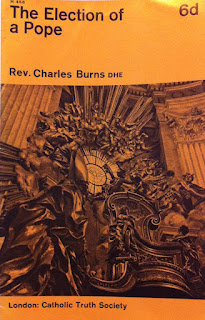Sermon Sermon First Week of Lent 2025
Father Aleks Mazur, SAC
First Reading: Deuteronomy 26: 4-10.
Responsorial Psalm: Psalms 91: 1-2, 10-11, 12-13, 14-15.
Second Reading: Romans 10: 8-13.
Verse Before the Gospel: Matthew 4: 4b.
Gospel: Luke 4: 1-13.
(Note: This sermon really struck me. It was an excellent sermon. It is posted here with permission.)
We know from the Book of Exodus that the Israelites, after leaving Egypt, spent 40 years in the desert on way to their Promised Land. Thank God, we have this AI nowadays. Today I asked my computer: How long it would take to walk through the Sinai desert? The answer I got was: Walking across the entire Sinai Trail, a 550 km route, can take approximately 42 days. Wow, 42 days! How come it took 40 years for the chosen people of God to cross the distance?
Some people say, the Israelites needed all that time to reform themselves, to abandon their slave-like mentality. They were supposed to enter their promised land as free people. During all those 40 long years they were tempted and their failed, several times.
They complained: the life was better off in Egypt. Yes, we were slaves but we had plenty of food there.
Because of that only the second generation of Israelites, born free in the desert, could walk into the Promised Land.
In our Gospel today the devil is tempting Jesus. Jesus spent 40 days in the desert to get ready for His mission. The devil tried 3 times and failed. Jesus won.
In each of the three temptations what the devil is saying to Jesus is, "Come on, use what you have to get what you want." And in each case Jesus overcomes the temptation by replying, "No, we can only use godly means to satisfy our God-approved needs."
Note that people are tempted only with what they need or want. And nowadays there are more and more things we want. And many of the things we want are those we really don’t need. And that’s a great opportunity for devil. They are also things we need but not always determent to get them in a decent way. And that’s another great chance for the devil.
I would like to expand today the meaning of the first temptation. So, now let’s mention just briefly the second and the third temptation.
In the second temptation the devil shows Jesus all the kingdoms of the world and promises to give him authority over them if only Jesus would worship him. In a way, the devil is telling Jesus: I am offering you a prime time to reach the world-wide audience where you can publicize your message, almost for free. Remember that Jesus was about to begin his public life and was looking for a way to get the whole world to know him and accept his message.
Look, I am offering you a great help, be loyal to me, says the devil. Jesus says no. The end does not justify the means. "It is written, 'Worship the Lord your God, and serve only him'".
In the third temptation the devil asks Jesus to throw himself down from the pinnacle of the temple as a way to prove that he was the Son of God. Jesus wanted to convince the people that he was the one. The devil suggested this sensational sky jump.
Here are all our bargaining prayers. I change my life, if you God do this to me, I will go to church, I will do this or that, if you grant this… Jesus said no to this temptation. "Do not put the Lord your God to the test". The God of Jesus Christ is not a business partner. He wants your unconditional trust and love and He will give what He knows is best for you.
And now let’s go back the first temptation. In the first temptation, Jesus had fasted for forty days in the wilderness and at the end of it he was very hungry. The devil puts an idea into his head: "If you are the Son of God, command this stone to become bread" . Notice that the first thing the devil does is sow a doubt in his mind: "if you are the Son of God." "Are you really sure God is with you?"
The same thing happened in the garden of Eden. The first thing the Tempter said to Eve was, "Did God really say you should not eat of any fruit of the garden". Temptation often begins with a doubting thought. Did God really say this or is it one of those Sunday school fairy tales? Jesus overcame the temptations by refusing to entertain such doubts and by standing on the word of God.
After his fasting Jesus needed to eat. So, the devil tempted him with food. It is not a sin for Jesus to eat after fasting. The sin may lie in how the food, and everything else for that matter, is obtained. Jesus refuses to take the devil's shortcut. The means we employ to satisfy our needs must be in accordance with the word of God. Feeding on God's word is ultimately more important than feeding on bread. "It is written, 'One does not live by bread alone'".
Fasting is a great school of character. Fasting is also one of the main Lenten observances. But what is this fasting exactly about? I think we need some clarification. There are practically 2 things regarding fasting: no meat and less food.
The Canadian Conference of Catholic Bishops mandates abstinence from meat on Ash Wednesday and Good Friday. This abstinence from meat applies to those age14 and older. In addition to that there is also an obligatory eating less on Ash Wednesday and Good Friday for Catholics aged 18 to 59.
We are talking here about eating only one full meal and two smaller meals, practically a snack.
Please know that several people are exempt from fasting on Ash Wednesday and Good Friday: those who are ill, including individuals suffering from chronic illnesses. Diabetics and pregnant women and those nursing are also exempt.
What about other Fridays? In the past Catholics used to abstain from meat every Friday. Friday was and is still considered a penitential day. We are supposed to reflect that in one way or another. The bishops in Canada give us here an option: first, we can give up meat on Fridays. This is the first option which can be substituted by other practices, like visiting the elderly, giving to the poor, helping the marginalized, praying extra, and so on.
We like to have an option, right? But, generally speaking, we don’t like to be told what to do, especially what to eat and what not to eat. I know some people struggle with that. You, may ask, why do we have to follow such rules, first place. Wouldn’t be better to let people be free and they can decide what to do? In a perfect world and an ideal church, that would be better. But the world is not perfect and we are not ideal.
We are creatures of habits… If we knew how to use our freedom, there will be no need for rules, commandments and precepts. But freedom is a hard job, it requires a lot of responsibility. It is much easier to dream about good food in Egypt, than to face the hardships of freedom in the desert.
That’s why we have those precepts in the Church, like Sunday obligation and fasting.
I know many people who decide, by their own initiative, to give up certain food on Fridays during Lent. As a matter of fact, some do that all Fridays during the whole year. There are even those who try to eat only bread with water. on certain days. These however are their own, personal choices.
My Brothers and Sisters, whatever we do special during Lent, like fasting for example, may it help us to be strong and to stay away from temptations. Jesus shows us that we should never trade off our faith in God or our moral principles for other things, because what we get by following devil is at the end only shame, disappointment and bitterness. Instead, the faithfulness to God is more precious than anything in this world.
Related Posts:
The Colors of the Church Year
The Privilege of Altar Serving
Serving God, Altar Serving and Learning to Listen
Saturday 18th Week or Ordinary Time
Twenty-Eighth Sunday in Ordinary Time 2017
Twenty-Ninth Sunday of Ordinary Time 2017
34th Sunday of Ordinary Time 2017 Christ the King – Solemnity
The Privilege of Altar Serving
Serving God, Altar Serving and Learning to Listen
Saturday 18th Week or Ordinary Time
Twenty-Eighth Sunday in Ordinary Time 2017
Twenty-Ninth Sunday of Ordinary Time 2017
34th Sunday of Ordinary Time 2017 Christ the King – Solemnity
Advent 2017 Reading Plan Preparing for the Season
1st Sunday of Advent 2017
Second Sunday of Advent 2017
Another Lonely Night - A Flash Fiction Story
Third Sunday of Advent 2017
Fourth Sunday of Advent 2017
Christmas 2017
I have sinned greatly ... a reflection.
Can you not with with me one hour?
I need God and I need the Catholic Church
Cedarcrest Retreat 2018 a Reflection and Photo Essay
1st Sunday of Advent 2017
Second Sunday of Advent 2017
Another Lonely Night - A Flash Fiction Story
Third Sunday of Advent 2017
Fourth Sunday of Advent 2017
Christmas 2017
I have sinned greatly ... a reflection.
Can you not with with me one hour?
I need God and I need the Catholic Church
Cedarcrest Retreat 2018 a Reflection and Photo Essay











































